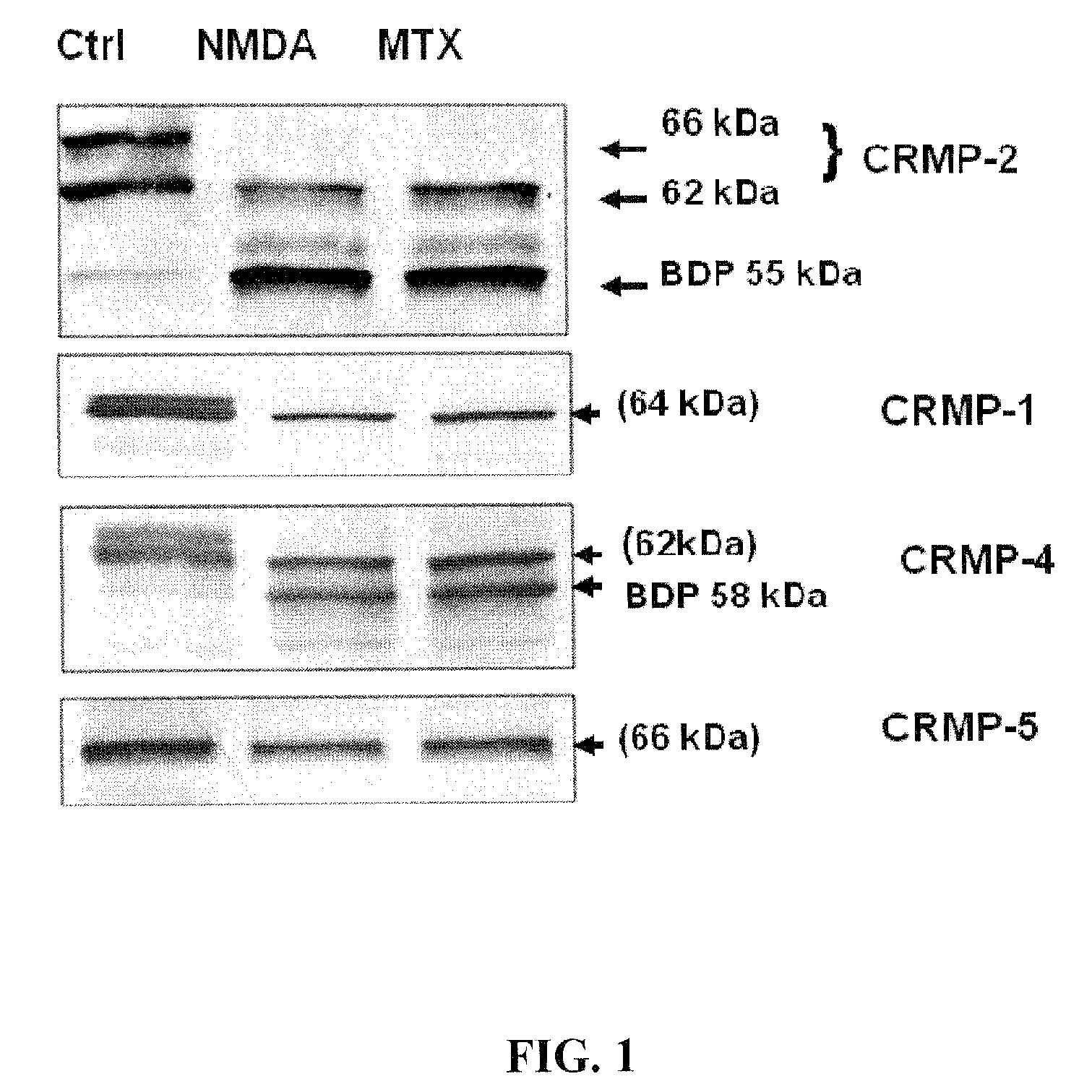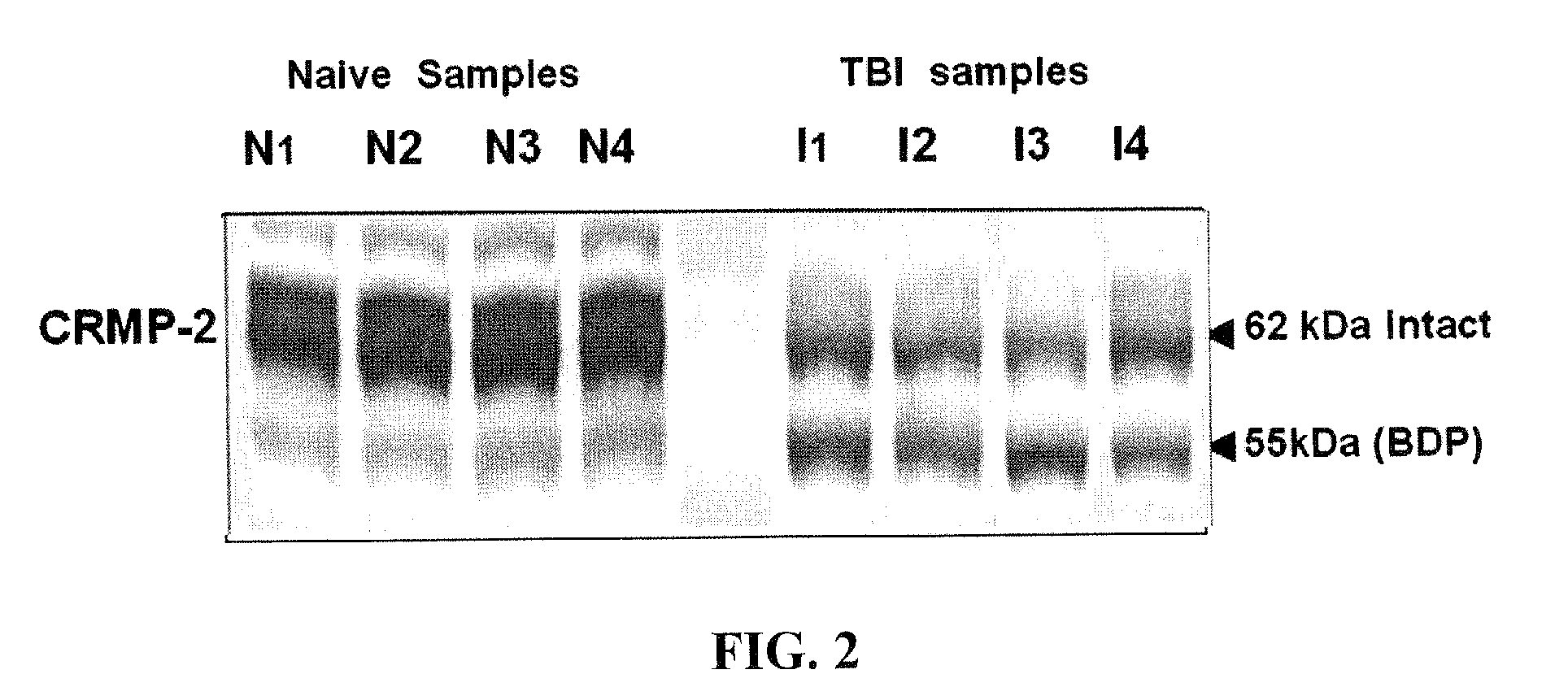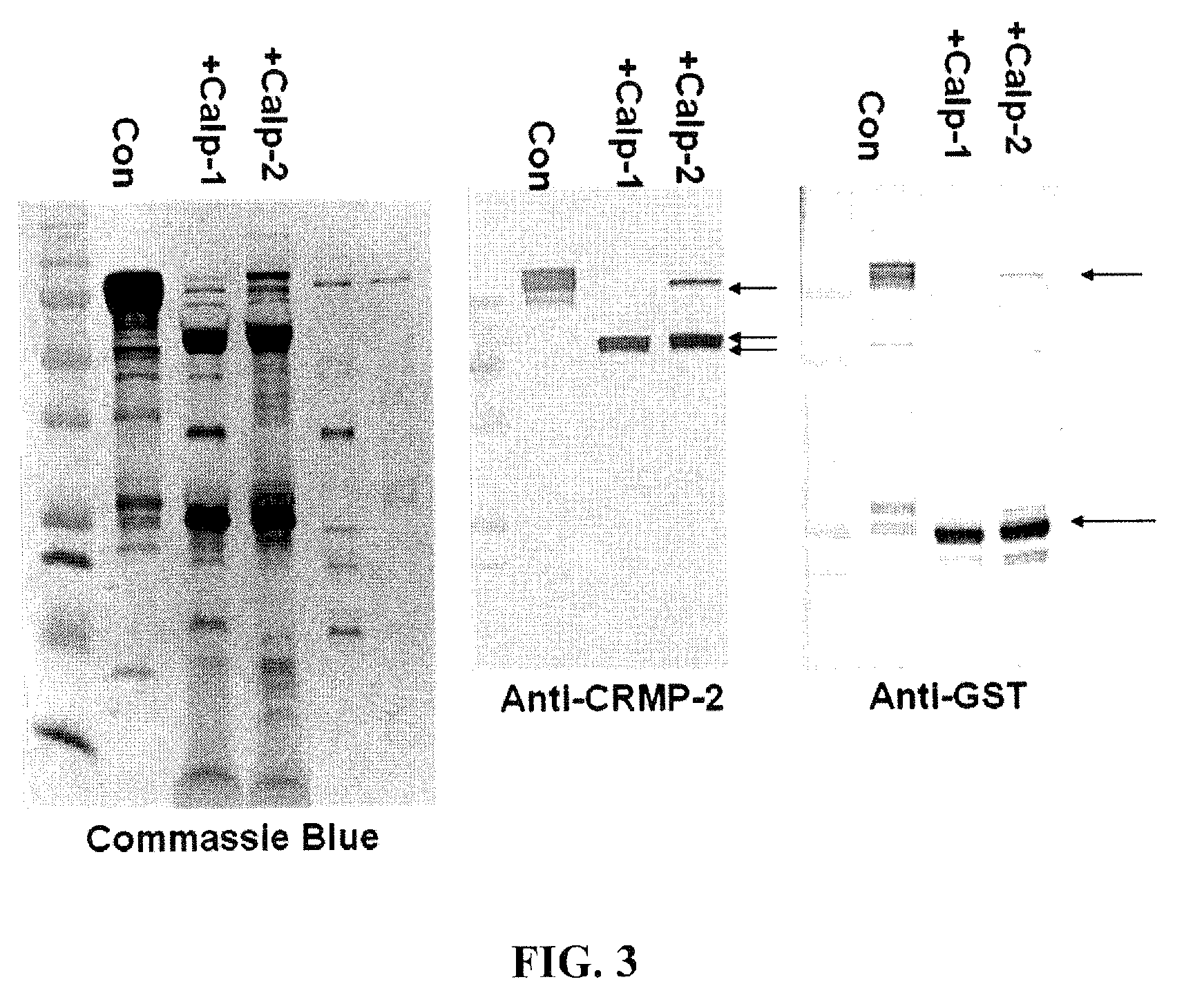Synaptotagmin and collapsin response mediator protein as biomarkers for traumatic brain injury
a traumatic brain injury and biomarker technology, applied in the field of neuronal damage neuronal changes associated with neuronal damage, can solve the problems of inability to quickly employ in an emergency room environment, high cost of ct and mri, and most tbi patients suffering long-term impairmen
- Summary
- Abstract
- Description
- Claims
- Application Information
AI Technical Summary
Benefits of technology
Problems solved by technology
Method used
Image
Examples
example 1
Proteolysis of CRMP2
[0097]The integrity of CRMP2 following NMDA and MTX neurotoxin induction in primary cortical neurons was examined. A marked reduction in the intact CRMP-2 (66 kDa and 62 kDa) was noticed along with the appearance of a 55 kDa band after excitotoxic injury (200 μM NMDA) in rat primary cortical neuron culture (FIG. 1). Similar results were observed after MTX treatment.
[0098]Two anti-phsopho-CRMP2 specific antibodies (3F4 and C-terminal Phospho-CRMP-2) were used to rule out the possibility that the 55 kDa band was due to de-phosphorylation. The altered profile of the 66 kDa and 62 kDa CRMP2 was not observed after NMDA and MTX treatment (data not shown). Thus, the 55 kDa fragment was likely a breakdown product of CRMP2.
[0099]The integrity of CRMP1, 4 and 5 was then examined under identical conditions. Decreases in intact CRMP1 and CRMP4 were observed, as well as the increase of a 58 kDa CRMP4 band; however, CRMP5 levels remained unchanged following neurotoxic treatmen...
example 2
Inhibition of CRMP2 Proteolysis
[0101]The apoptosis inducer staurosporine (STS, 0.5 μM), a calpain and caspase mixed challenge, and the calcium chelator EDTA (5 mM), a caspase-dominant challenge, were used in primary cortical neurons. Results showed that intact 62 kDa CRMP2 was rapidly degraded to the 55 kDa BDP upon STS treatment, but not upon the caspase-activating EDTA treatment. STS-mediated generation of the 55 kDa CRMP2 BDP was also effectively blocked by SJA6017, while Z-VAD offered no protection. The production of the 55 kDa CRMP2 BDP strikingly paralleled the production of the 150 and 145 kDa αII-spectrin breakdown products, which were monitored as markers for calpain activity in NMDA and STS treatment.
example 3
Blocking of CRMP2 Redistribution
[0102]LDH release assays were performed to determine the role of calpain and caspase inhibition on NMDA induced neuronal cell injury, and to draw a link with CRMP2 degradation. The release of LDH, normally present in the cytoplasm of neurons, into the cell culture media can be used as a measure of dying cells. Results showed that NMDA treatment induced CRMP2 proteolysis in a time-dependent manner. NMDA treatment induced significant neuron death after a 3 hour induction, peaking at 24 hours, which is consistent with the producing of the 55 kDa CRMP2 BDP. Moreover, the calpain inhibitor (SJA6017) provides significant protection within 6 hours, while the caspase inhibitor (Z-VAD) has no protection throughout NMDA treatment.
[0103]The distribution of CRMP2 following 6 hours' NMDA treatment with or without calpain and caspase inhibitor was examined to further explore the association of CRMP2 and NMDA induced neurite damage. In a normal healthy state, neuron...
PUM
| Property | Measurement | Unit |
|---|---|---|
| molecular weight | aaaaa | aaaaa |
| molecular weight | aaaaa | aaaaa |
| molecular weight | aaaaa | aaaaa |
Abstract
Description
Claims
Application Information
 Login to View More
Login to View More - R&D
- Intellectual Property
- Life Sciences
- Materials
- Tech Scout
- Unparalleled Data Quality
- Higher Quality Content
- 60% Fewer Hallucinations
Browse by: Latest US Patents, China's latest patents, Technical Efficacy Thesaurus, Application Domain, Technology Topic, Popular Technical Reports.
© 2025 PatSnap. All rights reserved.Legal|Privacy policy|Modern Slavery Act Transparency Statement|Sitemap|About US| Contact US: help@patsnap.com



